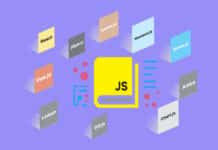- Eclipse Foundation said that this will be an open source alternative to Microsoft’s Visual Studio Code (VS Code) software.
- The Theia project was started by Ericsson and TypeFox in 2016
The Eclipse Foundation has announced the release of open source software Theia 1.0. Eclipse Theia is an extensible platform to develop multi-language Cloud and Desktop Integrated Development Environments (IDEs). It aims to enable developers, organizations, and vendors to create new, extensible developer experiences. Eclipse Foundation said that this will be an open source alternative to Microsoft’s Visual Studio Code (VS Code) software.
Mike Milinkovich, executive director of the Eclipse Foundation said, “We are thrilled to see Eclipse Theia deliver on its promise of providing a production-ready, vendor-neutral, and open source framework for creating custom and white-labeled developer products. Visual Studio Code is one of the world’s most popular development environments. Not only does Theia allow developers to install and reuse VS Code extensions, it provides an extensible and adaptable platform that can be tailored to specific use cases, which is a huge benefit for any organization that wants to deliver a modern and professional development experience. Congratulations to all the Theia committers and contributors on achieving this milestone.”
Runs on both Desktop and Cloud
The Theia project was started by Ericsson and TypeFox in 2016. The Eclipse Foundation said that Theia’s architecture is more modular and allows for significantly more customizations than VS Code. Theia is designed from the ground to run on both Desktop and Cloud. It has also been developed under the community-driven and vendor-neutral governance of the Eclipse Foundation.
Eclipse Theia can work as a native desktop application and in the context of a browser and a remote server. Theia runs in two separate processes to support both situations with a single source. These processes are called frontend and backend respectively, and they communicate through JSON-RPC messages over WebSockets or REST APIs over HTTP.













































































